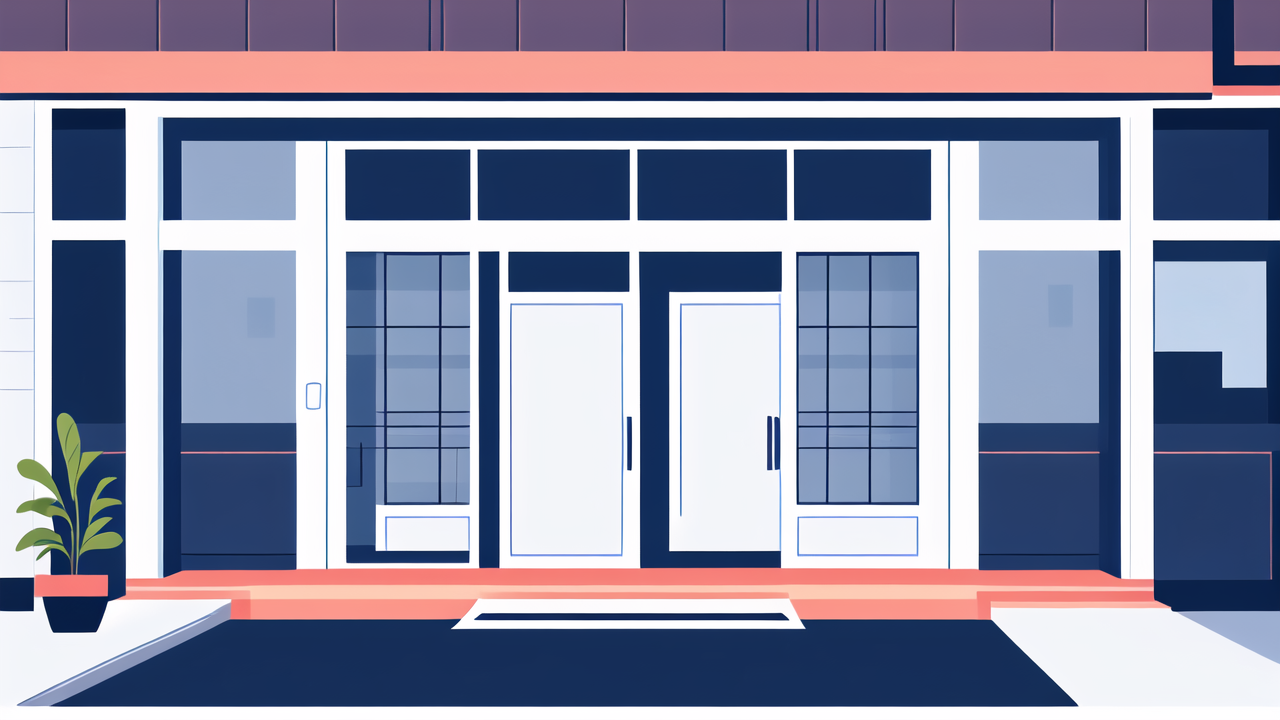The Rise of Modern Driveway Gates in Home Improvement
Understanding the Demand for Luxury Home Security
In recent years, American homeowners have shown a growing interest in enhancing their property's security. This trend has led to a surge in demand for modern driveway gates. These gates offer more than just protection; they add a touch of luxury to homes.

Many factors drive this demand. Rising concerns about personal safety and property protection top the list. Homeowners also seek to increase their property value and curb appeal. Modern gates provide a sense of privacy and exclusivity that many desire.
The appeal of these gates extends beyond security. They serve as a statement piece, reflecting the homeowner's style and taste. As a result, the market has responded with diverse designs and materials to suit various preferences.
Key Design Elements for a Modern Driveway Gate
When it comes to modern driveway gates, design is crucial. The goal is to blend functionality with aesthetics. Several key elements contribute to a gate's modern appeal.
- Minimalist designs: Clean lines and simple shapes are popular choices.
- Smart integration: Many gates now feature advanced tech like remote controls and security cameras.
- Custom sizing: Gates are tailored to fit the specific dimensions of each property.
- Unique materials: From sleek metals to warm woods, material choices are vast.
- Lighting features: Integrated lighting enhances both security and visual appeal.
These elements work together to create gates that are both practical and visually striking. The right combination can dramatically enhance a home's entrance.
The Influence of Materials and Technology on Gate Aesthetics
The materials used in modern driveway gates play a significant role in their overall look and feel. Traditional options like wood and wrought iron are still popular. However, newer materials are gaining traction.
- Aluminum: Lightweight and rust-resistant, ideal for coastal areas.
- Steel: Offers strength and durability with a modern industrial look.
- Composite materials: Combine the warmth of wood with low maintenance needs.
- Glass: Provides a contemporary look while maintaining visibility.
Technology also shapes gate aesthetics. Smart features are becoming increasingly common. These include keyless entry systems, video intercoms, and automated opening mechanisms. Such features not only enhance security but also add a modern touch to the gate's design.
The combination of innovative materials and smart technology allows for endless design possibilities. This enables homeowners to create gates that truly reflect their personal style and meet their security needs.
Step-by-Step Guide to DIY Fence Installation
Assessing Your Space and Determining Gate Location
Before installing a fence, it's crucial to assess your property and decide on the gate's location. This step ensures that your fence serves its purpose effectively and complements your home's design.

Start by walking your property line. Note any obstacles or unique features that might affect fence placement. Consider factors like slope, existing structures, and underground utilities.
Next, think about the gate's location. It should provide easy access while maximizing security. Consider the flow of traffic, both vehicular and pedestrian. Ensure the gate doesn't obstruct views or create blind spots.
Measure the area where you plan to install the fence. This will help you determine how much material you'll need. It's always wise to add a little extra for unexpected issues or mistakes.
Finally, check with your local zoning office. They can provide information on any restrictions or required permits. This step can save you time and money in the long run.
Material Selection: Balancing Cost and Quality
Choosing the right materials for your fence is a balancing act between cost and quality. Different materials offer various benefits and drawbacks. Here's a quick overview:
- Wood: Natural look, affordable, but requires regular maintenance.
- Vinyl: Low maintenance, durable, but can be more expensive upfront.
- Aluminum: Lightweight, rust-resistant, ideal for sloped yards.
- Wrought iron: Classic look, very durable, but costly and requires upkeep.
- Chain link: Affordable and low maintenance, but less privacy.
Consider your climate when selecting materials. Some fare better in certain weather conditions. For example, vinyl might be a good choice in humid areas prone to wood rot.
Don't forget about hardware. Quality hinges, latches, and post caps can enhance your fence's durability and appearance. While they may cost more initially, they can save money on repairs in the long run.
Lastly, think about your long-term plans. If you intend to sell your home soon, a more neutral design might be best. If you plan to stay for years, invest in materials that will last.
The Installation Process: A Detailed Walkthrough
Installing a fence can be a rewarding DIY project. Here's a step-by-step guide to help you through the process:
- Mark your fence line: Use stakes and string to outline where your fence will go.
- Dig post holes: Use a post hole digger or auger. Depth should be 1/3 the post height plus 6 inches for gravel.
- Set posts: Place gravel in holes, insert posts, and fill with concrete. Use a level to ensure they're straight.
- Install rails: Once concrete is dry, attach horizontal rails to the posts.
- Add fence panels or pickets: Secure these to the rails, maintaining consistent spacing.
- Install the gate: Hang the gate using heavy-duty hinges. Ensure it swings freely and latches securely.
- Apply finish: If using wood, apply stain or paint for protection and aesthetics.
Remember to work methodically and check your progress often. It's easier to fix mistakes early in the process. Don't rush - take breaks as needed to maintain accuracy and safety.
If you encounter any issues or feel unsure at any point, don't hesitate to consult a professional. Some tasks, like electrical work for automated gates, may require expert help.
Navigating Regulations and Best Practices
Local Regulations and Compliance for Fence Installation
When installing a fence, it's crucial to understand and comply with local regulations. These rules can vary widely between different areas, so research is key.

Start by contacting your local building department or zoning office. They can provide information on:
- Height restrictions for fences
- Setback requirements from property lines
- Specific rules for front yard vs. backyard fences
- Any historical district regulations
Many areas require permits for fence installation. The application process usually involves submitting a plan of your property showing the proposed fence location.
Don't forget to check with your homeowners' association if you have one. They may have additional rules about fence styles or materials.
It's also important to know your property boundaries. Consider getting a professional survey if you're unsure. This can prevent disputes with neighbors and ensure your fence is on your property.
Professional Tips to Maintain Your Fence for Longevity
Proper maintenance is key to ensuring your fence lasts for years. Here are some professional tips:
- Regular cleaning: Remove dirt and debris at least once a year.
- Inspect regularly: Look for signs of damage, loose boards, or rusting hardware.
- Address issues promptly: Fix small problems before they become big ones.
- Wood fences: Reapply stain or paint every 2-3 years to protect from weather damage.
- Metal fences: Check for rust and touch up paint as needed.
- Vinyl fences: Clean with mild soap and water to prevent staining.
For automated gates, schedule regular maintenance checks. This includes lubricating moving parts and testing electronic components.
Trim vegetation near the fence to prevent damage from branches or roots. This also helps maintain good airflow, reducing moisture buildup.
In winter, avoid piling snow against the fence. The weight and moisture can cause damage over time.
Enhancing Aesthetic Appeal: Integrating Fences into Overall Landscaping Design
A well-designed fence can greatly enhance your home's curb appeal. Here are some tips for integrating your fence into your landscape:
- Choose a fence style that complements your home's architecture.
- Use plants to soften the look of the fence. Climbing vines or flowering shrubs can add color and texture.
- Consider adding lighting to highlight the fence at night. Solar-powered options are energy-efficient and easy to install.
- For privacy fences, create visual interest with varying heights or decorative panels.
- Incorporate the fence into your garden design. Use it as a backdrop for flowerbeds or a support for climbing vegetables.
- Add decorative elements like post caps or finials to enhance the fence's appearance.
- For modern homes, consider a mix of materials. A combination of wood and metal can create a striking look.
Remember, your fence is part of your home's overall design. It should enhance, not detract from, your property's beauty. With careful planning and maintenance, your fence can be both functional and aesthetically pleasing.
